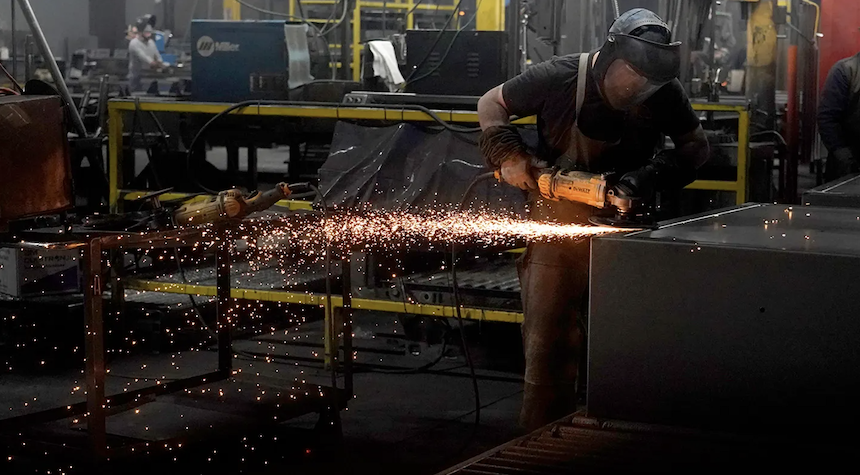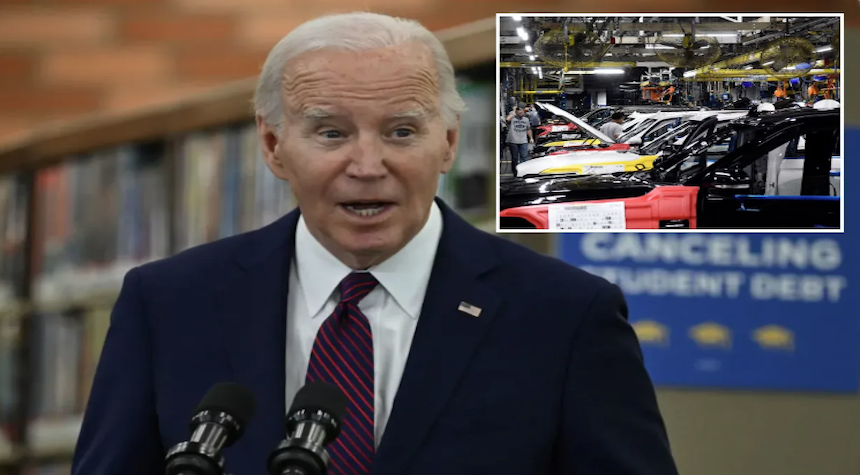After being proposed more than a year earlier, the new Biden Administration air quality rule has been finalized as of early February.
The Environmental Protection Agency of President Biden (EPA) has recently finalized a rule on air quality that could result in the loss of one million manufacturing jobs and may undermine efforts to create new manufacturing facilities.
According to an advanced copy of his remarks, Jay Timmons will be raising the alarm on regulation during his annual State of Manufacturing address in Roseville Michigan.
In his State of the Union address next month, Biden is likely to take credit for the achievements of manufacturers. That’s fair. Timmons said, “I know he is passionate about manufacturing.” “As he says often on the road: ‘This nation was once the leader in manufacturing. We’re going to do it again.
“But he won’t let you know that, right now, his federal agencies work to undermine the manufacturing legacy – they are working against your success. Timmons said that just two weeks earlier, the federal agencies announced a big regulation that could eliminate up to one million jobs. It’s called National Ambient Air Quality Standards (PM2.5).

President Joe Biden Manufacturing
The EPA of President Biden recently finalized a regulation on air quality that could result in job losses, according to manufacturers.
It’s the consequences that matter, not the name. The consequences are what matters. Even in Europe, the rules are stricter. In vast areas of the country we won’t be able to build any new manufacturing facilities because of this,” Timmons said.
The EPA first proposed the regulation in 2023, and released a final version this year, on February 7. The rule increases the NAAQS for fine particle pollution or PM2.5. This is particulate matter with a diameter of two and a quarter micrometers.
Michael Regan, EPA Administrator, said in announcing this rule: “The final air quality standard will help save lives and improve the health of all Americans. This is especially true for America’s most vulnerable communities and those who are overburdened.” According to the EPA, this revision could prevent “upwards of 4,500 premature deaths” and 290,000.0 lost workdays. This would result in a net health benefit of up to $46, billion by 2032.
 Ford F-150s assembled at Dearborn’s Ford Truck Plant.
Ford F-150s assembled at Dearborn’s Ford Truck Plant.
Timmons warned Michigan, a swing state with an important manufacturing base, could be the hardest hit by the new regulation. The impact will also be felt in the rest of the Great Lakes State.
“Michigan will be one of those states that is most affected. If new manufacturing investments stop, this will affect the entire state’s economy. It impacts the family who is trying to sell their house, the teacher who hopes for new investments in school, and the students searching for jobs in the state,” Timmons said.
What is the purpose? “You cannot solve the environmental problems of the world by moving manufacturing investments from the United States into countries with lower standards,” added he.

Manufacturing worker
National Association of Manufacturers CEO Jay Timmons has warned that manufacturing faces threats such as burdensome regulations, tax increases, and trade barriers.
Timmons also praised the growth in the manufacturing industry over the past few years and said that artificial Intelligence (AI) can drive a new age of innovation and investment that will bolster America’s economic strength through the remainder of this decade and into the future.
The state of the manufacturing sector depends on its people. We are now 13 million strong, the most in over 15 years. Imagine what manufacturing will look like by 2030, at the end of the decade, if we continue along this path, this resurgence.
Artificial intelligence could unlock new superpowers for American workers. We may reach a point at which no other country will be able to keep up with the speed of our innovation or productivity. “Manufacturing investment could flood our shores faster,” he said.
Timmons, however, warned that heavy regulations such as PM2.5, the failure to ease legal immigration, trade barriers, and looming tax increases, along with rising geopolitical threats to U.S. security, could dim these prospects.
Timmons stated, “That’s why I can report that manufacturing in America is resilient and strong but also under threat.”


